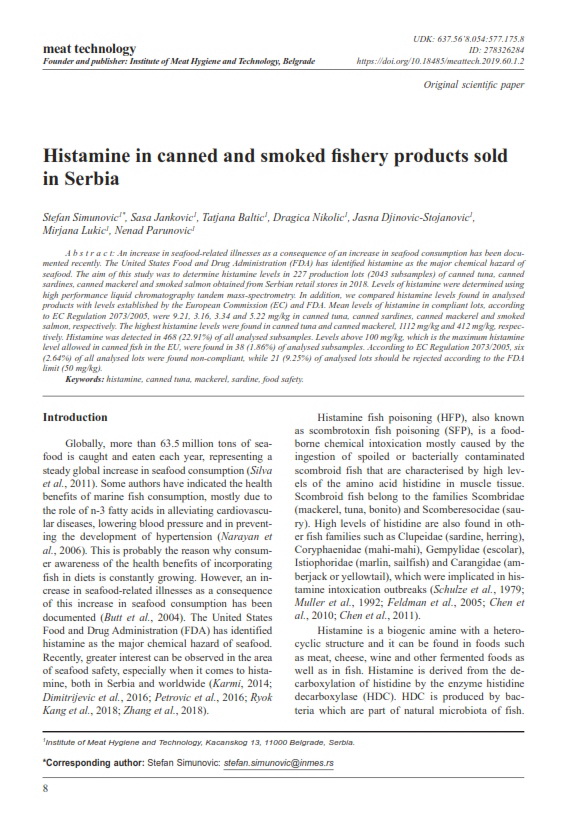Histamine in canned and smoked fishery products sold in Serbia
Abstract
An increase in seafood-related illnesses as a consequence of an increase in seafood consumption has been documented recently. The United States Food and Drug Administration (FDA) has identified histamine as the major chemical hazard of seafood. The aim of this study was to determine histamine levels in 227 production lots (2043 subsamples) of canned tuna, canned sardines, canned mackerel and smoked salmon obtained from Serbian retail stores in 2018. Levels of histamine were determined using high performance liquid chromatography tandem mass-spectrometry. In addition, we compared histamine levels found in analysed products with levels established by the European Commission (EC) and FDA. Mean levels of histamine in compliant lots, according to EC Regulation 2073/2005, were 9.21, 3.16, 3.34 and 5.22 mg/kg in canned tuna, canned sardines, canned mackerel and smoked salmon, respectively. The highest histamine levels were found in canned tuna and canned mackerel, 1112 mg/kg and 412 mg/kg, respectively. Histamine was detected in 468 (22.91%) of all analysed subsamples. Levels above 100 mg/kg, which is the maximum histamine level allowed in canned fish in the EU, were found in 38 (1.86%) of analysed subsamples. According to EC Regulation 2073/2005, six (2.64%) of all analysed lots were found non-compliant, while 21 (9.25%) of analysed lots should be rejected according to the FDA limit (50 mg/kg).





